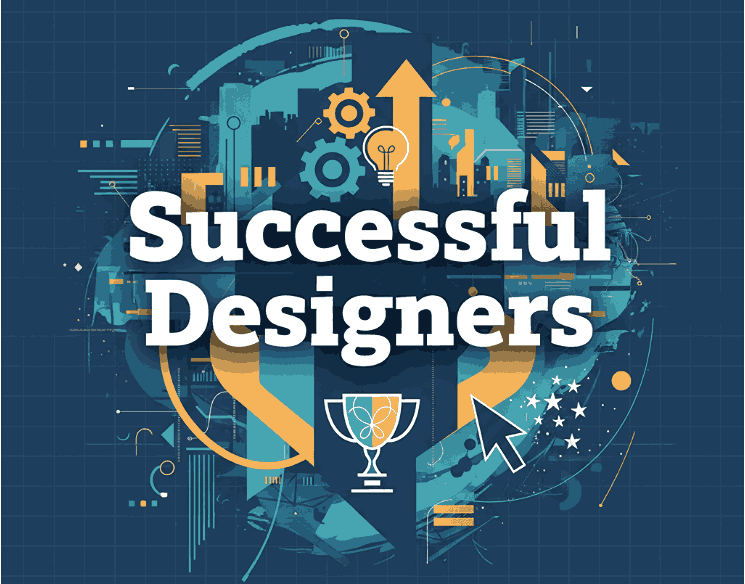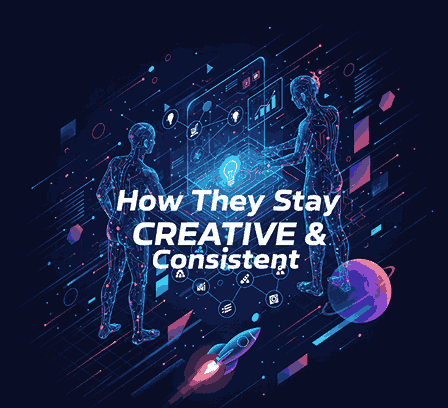
Table of Contents
- Introduction
- Why Habits Matter in Design
- Core Habits of Highly Successful Designers
3.1 Growth Mindset & Lifelong Learning
3.2 Discipline & Consistency
3.3 Embrace Failure & Iterate Quickly
3.4 User-Centered Thinking & Empathy
3.5 Attention to Detail & Ruthless Editing
3.6 Strong Communication & Collaboration
3.7 Time Management & Focus - Integrating Habits into a Daily Routine
- Font Design & These Habits: A Real Example
- Common Pitfalls & How to Overcome Them
- Conclusion
- References
1. Introduction Habits of Successful Designers
If you ever wonder what separates a journeyman designer from an outstanding one, the answer often lies not in talent, but in habits. The Habits of Successful Designers define how they approach work, maintain creativity, and consistently deliver excellence. In this article, we’ll uncover the key habits that the best designers practice, how to embed them into your workflow, and how these habits translate for teams designing and selling fonts (like yours).
2. Why Habits of Successful Designers Matter
Talent and inspiration are fleeting. But habits are dependable. As one writer puts it, “You don’t rise to the level of your goals. You fall to the level of your systems.” (from design habits essays)
Good habits build mental models, reduce decision fatigue, and free creative energy for problem solving. In the fast-changing world of design, habits give you stability, direction, and resilience.

3. Core Habits of Successful Designers of Highly
Below are some of the most cited, impactful habits observed among successful designers:
3.1 Growth Mindset & Lifelong Learning
Design is never “done.” Top designers continuously learn—new tools, emerging styles, UX trends, or adjacent fields such as psychology or marketing. The 8 Habits of the Most Successful Designers highlights that they cultivate curiosity and learning over time.
3.2 Discipline & Consistency
Producing great work habitually—day in, day out—is crucial. Rather than waiting for inspiration, they show up and do the work. As in “The Design Habit,” successful creatives develop systems that keep them moving forward even when motivation dips.
3.3 Embrace Failure & Iterate Quickly
Rather than fearing mistakes, they treat them as experiments. Rapid prototyping, failure, and iteration is part of the creative cycle. The 8 Habits article also notes that such designers accept failure as a normal part of growth.
3.4 User-Centered Thinking & Empathy
Great designs begin with understanding people. Successful designers seek to understand first, then be understood. They observe, listen, test, and design for real needs—not assumptions. The 7 Habits of Highly Effective Designers draws parallels to Covey’s principles, emphasizing this habit.
3.5 Attention to Detail & Ruthless Editing
They don’t settle for “good enough.” Every pixel, spacing, kerning, or alignment matters. They often “edit again and again”—refining until clarity and cohesion are achieved. In lists of design habits, this quality is repeatedly named.
3.6 Strong Communication & Collaboration
Design is rarely solitary. Successful designers articulate their decisions, accept feedback, and work well with stakeholders (developers, clients, marketers). They know how to translate design logic into understandable language.
3.7 Time Management & Focus
Distractions kill flow. Top designers structure their time, block distraction periods, prioritize important tasks, and protect deep work. They treat design as serious work—not just a creative hobby.
4. Integrating Habits of Successful Designers into a Daily Routine
How to turn these traits into routines:
- Morning rituals: freestyle sketching, reading design blogs or inspirations
- Mini daily goals: small, achievable tasks to build momentum
- Design jam sessions: timed sprints with focus, no interruptions
- Review & reflection: end of day review—what worked, what didn’t
- Weekly learning block: dedicated time for courses, reading, experiments
- Feedback loop: share work early and often for critique
Start small. Pick one or two habits to focus on for a few weeks, then layer more.

5. Font Design & These Habits of Successful Designers: A Real Example
If your team designs and sells fonts, these Habits of Successful Designers magnify impact:
- Growth mindset → exploring new scripts, languages, typographic techniques
- Consistency → maintaining style across font weights, glyph sets
- Failure/iteration → refining problematic glyphs or kerning pairs
- Empathy → thinking of how users will use the font (legibility, contexts)
- Attention to detail → every diacritic mark, spacing, curve must be precise
- Communication → documenting licensing, glyph guidelines, client support
- Time & focus → releasing font collections on schedule
Here are sample fonts in your catalog that benefit from such habits:
Through disciplined practice and iteration, your font work becomes not just beautiful, but reliable, professional, and scalable.
6. Common Pitfalls & How to Overcome Them
| Pitfall | How to Counter |
|---|---|
| Overwhelming yourself with many new habits at once | Introduce 1 habit at a time; establish mastery before layering |
| Perfection paralysis | Use timed sessions and set “good enough” thresholds |
| Ignoring reflection | Without reviewing, you won’t learn what needs adjustment |
| Working in isolation | Share work early; invite critique and collaboration |
7. Conclusion
The Habits of Successful Designers are not mysterious secrets—they’re consistent practices rooted in mindset, discipline, empathy, and iteration. Talent may open doors, but habits build longevity.
As a font design and sales team, embedding these habits will help you produce better typefaces, support clients, and sustain creative excellence. Start small, stay curious, and iterate relentlessly.
References
- The 7 Habits of Highly Effective Designers – applying Covey’s framework to design context.
- The 8 Habits of the Most Successful Designers – traits observed in top designers.
- The Design Habit (Part 1): What Makes an Excellent Designer – building dependable design systems through habit.
